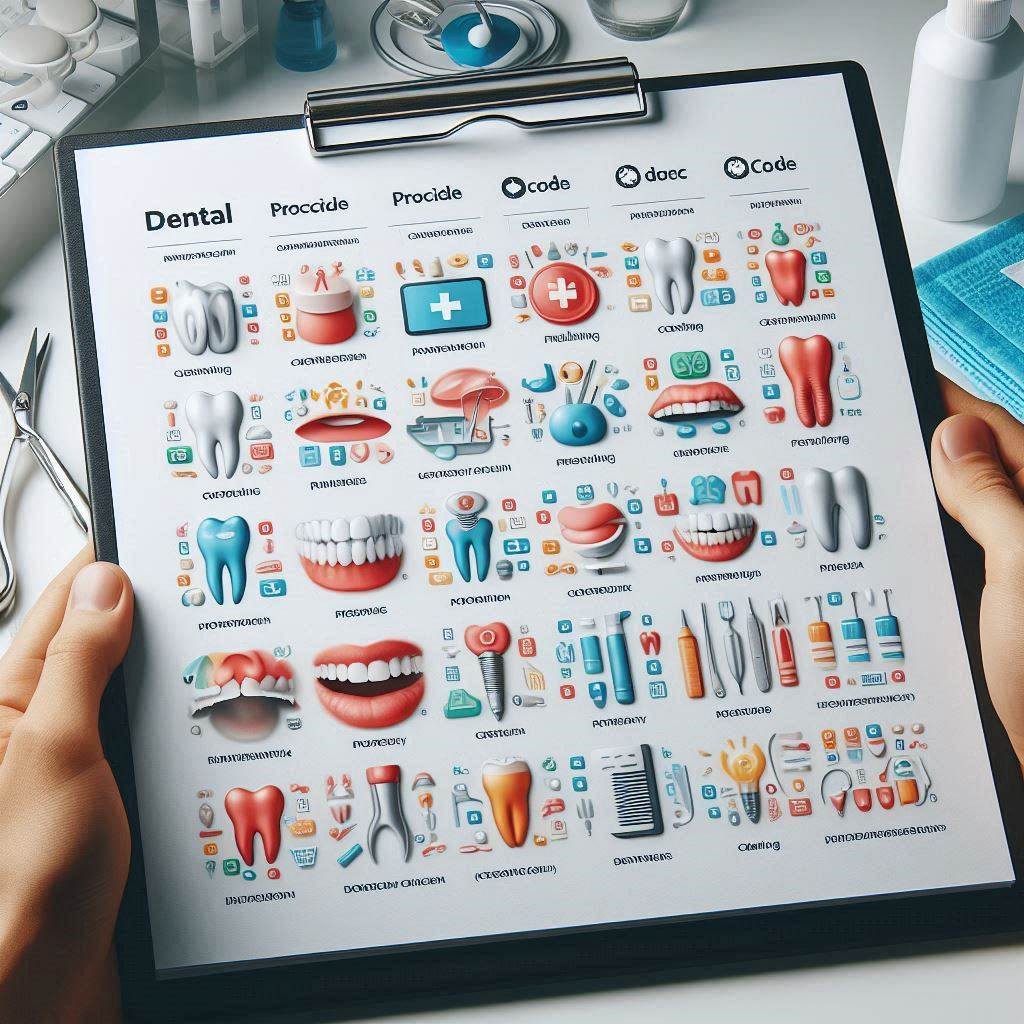Most Common Dental Procedure Codes
Dental procedures are an integral part of maintaining oral health, and understanding the codes associated with these procedures is essential for both dental professionals and patients. Dental procedure codes, often referred to as Current Dental Terminology (CDT) codes, are used to standardize the identification and billing of dental treatments. This comprehensive guide will explore the most common dental procedure codes, provide a detailed lookup resource, and explain their descriptions. Whether you’re a dental professional, a student, or a patient seeking clarity, this article will serve as an invaluable resource.

Most Common Dental Procedure Codes List
Dental procedure codes are standardized by the American Dental Association (ADA) and are updated annually. These codes are used for billing, insurance claims, and record-keeping. Below is a table of the most common dental procedure codes:
| Code | Procedure Name | Category |
|---|---|---|
| D0120 | Periodic Oral Evaluation | Diagnostic |
| D0140 | Limited Oral Evaluation | Diagnostic |
| D0210 | Intraoral – Complete Series of X-Rays | Diagnostic |
| D1110 | Prophylaxis – Adult | Preventive |
| D1206 | Topical Fluoride Application | Preventive |
| D2140 | Amalgam Restoration – One Surface | Restorative |
| D2391 | Resin-Based Composite – One Surface | Restorative |
| D2740 | Crown – Porcelain/Ceramic | Restorative |
| D4341 | Periodontal Scaling and Root Planing | Periodontics |
| D7240 | Extraction – Erupted Tooth | Oral Surgery |
| D9310 | Consultation | Miscellaneous |
This table provides a snapshot of the most frequently used codes. Each code corresponds to a specific dental procedure, ensuring clarity and consistency in dental practices.
Most Common Dental Procedure Codes Lookup
Understanding how to look up dental procedure codes is crucial for dental professionals and patients alike. The ADA’s CDT codes are organized into categories, making it easier to locate specific procedures. Here’s how you can perform a lookup:
- Use the ADA CDT Code Manual: The ADA publishes an annual manual that includes all current dental procedure codes. This is the most reliable resource for accurate information.
- Online Databases: Websites like the ADA’s official site or dental billing platforms offer searchable databases for CDT codes.
- Dental Software: Many dental practice management software systems include built-in code lookup tools.
For example, if you want to find the code for a porcelain crown, you would search under the “Restorative” category and locate code D2740.
Most Common Dental Procedure Codes and Descriptions
Below is a detailed breakdown of the most common dental procedure codes and their descriptions:
Diagnostic Codes
- D0120 – Periodic Oral Evaluation: This code is used for routine dental check-ups, typically performed every six months. It includes an examination of the teeth, gums, and oral cavity.
- D0140 – Limited Oral Evaluation: This code is used for problem-focused evaluations, such as assessing a specific issue like tooth pain or trauma.
- D0210 – Intraoral – Complete Series of X-Rays: This code covers a full set of dental X-rays, which are essential for diagnosing issues like cavities, bone loss, and impacted teeth.
Preventive Codes
- D1110 – Prophylaxis – Adult: This code refers to a routine dental cleaning for adult patients, which includes scaling and polishing to remove plaque and tartar.
- D1206 – Topical Fluoride Application: This code is used for the application of fluoride to the teeth to prevent cavities, commonly performed for children and high-risk patients.
Restorative Codes
- D2140 – Amalgam Restoration – One Surface: This code is used for filling a cavity on one surface of a tooth using amalgam material.
- D2391 – Resin-Based Composite – One Surface: This code refers to a tooth-colored filling for one surface of a tooth, commonly used for front teeth or visible areas.
- D2740 – Crown – Porcelain/Ceramic: This code covers the placement of a porcelain or ceramic crown, which is used to restore a damaged or decayed tooth.
Periodontics Codes
- D4341 – Periodontal Scaling and Root Planing: This code is used for deep cleaning procedures that treat gum disease by removing plaque and tartar from below the gumline.
Oral Surgery Codes
- D7240 – Extraction – Erupted Tooth: This code refers to the removal of a fully erupted tooth, typically due to decay, damage, or overcrowding.
Miscellaneous Codes
- D9310 – Consultation: This code is used for a dental consultation, which may involve discussing treatment options or second opinions.
Conclusion
Understanding dental procedure codes is essential for efficient dental practice management and patient communication. This guide has provided a comprehensive list of the most common codes, a lookup resource, and detailed descriptions. By familiarizing yourself with these codes, you can ensure accurate billing, streamline insurance claims, and enhance patient care.
FAQs
1. What are CDT codes?
CDT codes, or Current Dental Terminology codes, are standardized codes used to describe dental procedures for billing and record-keeping purposes.
2. How often are CDT codes updated?
The ADA updates CDT codes annually to reflect changes in dental practices and technology.
3. Can patients access CDT codes?
Yes, patients can access CDT codes through their dental providers or online resources to better understand their treatment plans and insurance claims.
4. Why are dental procedure codes important?
Dental procedure codes ensure consistency in billing, streamline insurance claims, and provide a clear record of treatments performed.
Additional Resources
- American Dental Association (ADA): www.ada.org
- CDT Code Manual: Available for purchase on the ADA website.
- Dental Billing Software: Platforms like Dentrix and Eaglesoft offer built-in code lookup tools.


